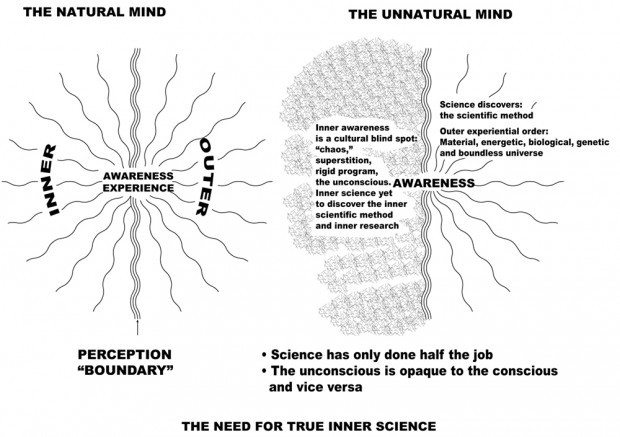Before the historic Scientific Revolution, there was as much dark superstition, guesswork and misinformation about the external world as there is now about our inner, psychological experience. Then, the earth was flat, the sun, moon and stars revolved around the
Before the historic Scientific Revolution, there was as much dark superstition, guesswork and misinformation about the external world as there is now about our inner, psychological experience. Then, the earth was flat, the sun, moon and stars revolved around the earth, God up there presided over it all, and the devil in hell waited for the evil ones. There were nasty spirits, goblins, fairies, spells and witches.
Our need for a new Scientific Revolution of inner experience is just as dire. Psychology is still considered a “soft” science for good reason: at the beginning of the 20th century, a few interested European researchers got together to figure out how to launch the science of psychology. Some argued for direct inner experience/research. But the majority won out by claiming that to be scientifically “objective,” there had to be an objective observer and the object under observation. That is how behaviorism was born. It was not understood that the neurosis of the observer was compounded with that of the observed.
Thus psychology has been limping along for a century. Meanwhile, great strides are made to understand the function of the brain from the outside. Candace Pert discovered several neuropeptides that induce different emotions. We have various electronic methods for observing brain function. But even hard science is discovering that the separate observer influences the experiment. The glitch in psychoanalysis is the analyst’s interpretation. Introspection requires no interpretation, as all the needed understanding is in the feeling-experience itself. Awareness heals. The truth shall make you free. Our psyches are our map to freedom… if we dare to look.
Introspection has been successfully used by Buddhists and other mystics for centuries. When the observer and the observed are one person, there is direct experience of every psychological condition. However, a new scientific method is needed: verification by others exploring their own inner workings. This is actually the process that was launched by seekers, workshop leaders, breath workers — Aldous Huxley’s Doors to Perception, Timothy Leary, Ram Dass — and meditators in the 1960s and thereafter.
Diads, or teams of seekers, can facilitate the process of inner research when specific guidelines and questions are used. The knowledgeable facilitator, who already has his bearings in the inner landscape, can guide the seeker/researcher to look at and experience specific aspects of their inner journey.
The problem of compounding neurosis can largely be avoided when there is a commitment to truth and direct experience of feelings/emotions, rather than the ego-mind story that harbors the neurosis conflicts. So the suggestion is always made during inner research, to drop below the mental story/attachments into the direct experience of the feeling.
Many successful workshops and emotional resolution methods use this basic technique of direct inner experience, including A. H. Almaas’ Diamond Work, Ken Keys’ Handbook to Higher Consciousness and J. Krishnamurti (“live experimentally,” “choiceless awareness”), to name a few.
Inner research is also a creative risk.
The threshold to overcome see Paradigm 10 is the ego’s resistance to looking at the unfamiliar, in particular the repressed material. Sooner or later we must all do the inner work of clearing the ego program. Is there anything more important to do in life?
• Arius Hopman lives in Hanapepe. This column was adapted from his manuscript ‘The Ego Empire Exposed.’


